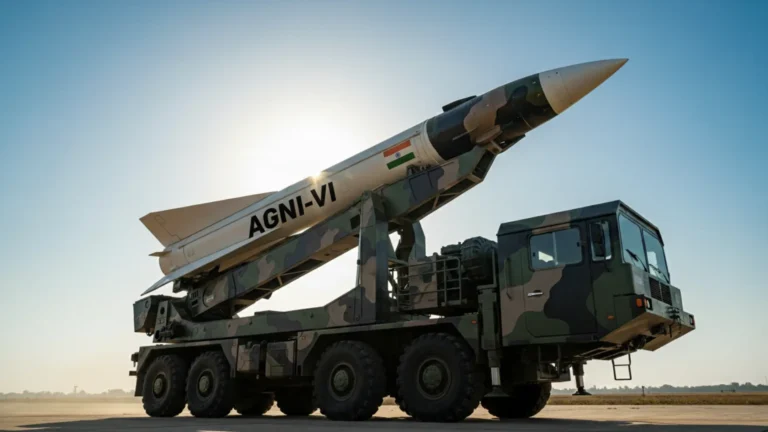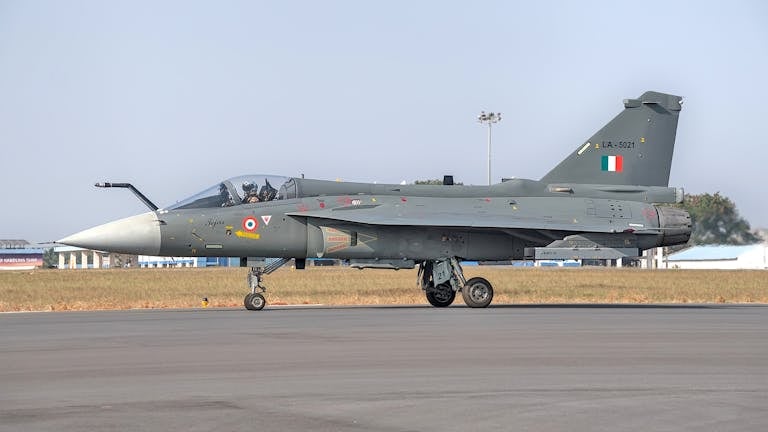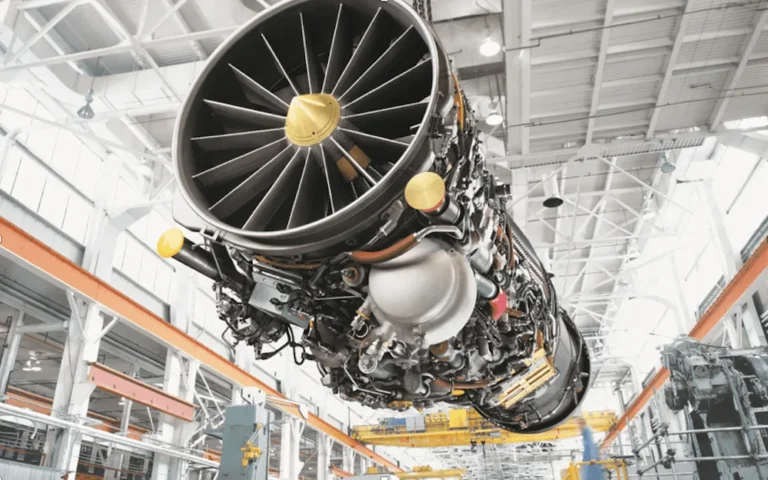India’s advance fighter aircraft technology has taken a significant jump with the development of the Advanced Medium Combat Aircraft (AMCA). This indigenous fifth-generation stealth fighter jet being developed by the Aeronautical Development Agency (ADA) under the Department of Defence Research and Development (DRDO) in collaboration with the Hindustan Aeronautics Limited (HAL) and the aims to boost the India’s air combat capabilities and reduce dependency on foreign military imports.
We’ll talk you all you need to know about the AMCA jet:-
its development history, design features, stealth capabilities, engine prospects, production timeline and its strategic importance in the context of India’s defence ambitions.
1. What is the AMCA Jet ?
The Advanced Medium Combat Aircraft (AMCA) is India’s fifth-generation with twin-engine and stealth multirole fighter aircraft. Designed to meet the future requirements of the Indian Air Force (IAF) and the AMCA is set to perform air superiority, ground attack, electronic warfare, and reconnaissance missions.
The aircraft will come in two variants:- the Mark 1, which will initially be powered by GE-F414 engines, and the more advanced Mark 2 which will feature a more powerful indigenously developed engine.
2. Features of AMCA:
Stealth Design:- The AMCA features a stealthy airframe with internal weapon bays, radar-absorbing materials and reduced infrared and radar signatures.
The AMCA is designed with stealth as a core principle which means it will be difficult for enemy radars to find out during the war time.
Internal weapon bays ensure that missiles and bombs do not create a radar signature by hanging outside the aircraft body.
Radar-Absorbent Materials (RAM) cover the surface to soak up radar radiation instead of bouncing them back.
The geometry of the plane (with angled surfaces and no protrusions) is designed to lower the Radar Cross Section (RCS).
Cooling the engine exhaust also lowers the infrared signature which making it difficult for heat – seeking missiles to lock on.
Benefit:- The AMCA will be capable of handling both offensive and defensive missions giving India a technological edge.
3. AMCA Development Timeline:
2008:- In this year intial concept and feasibility studies begin.
This marks the inception of the AMCA project. during this stage the Aeronautical Development Agency {ADA} explored the feasibility of building a fifth-generation stealth fighter indigenously. it involved to defining operational requirements and assessing whether the existing Indian aerospace ecosystem can support such an advance fighter jet programs.
2010-2015:
During this period preliminary design finalized and ADA collaborates with HAL and with other agencies.
In this phase ADA began the preliminary design of the AMCA with help from Hindustan Aeronautics Limited (HAL), DRDO labs, and academic institutions like IITs and NAL (National Aerospace Laboratories). They developed wind tunnel models, 3D CAD drawings, and system architecture.
Purpose: To freeze the basic layout and configuration of the aircraft including stealth geometry and internal weapons bay design.
2019: AMCA design receives approval from the Ministry of Defence.
The Indian Ministry of Defence formally approved the AMCA design and given the green light for full scale development and also included approval for the construction of prototypes and the initiation of full system integration.
Purpose: Official sanction and funding to progress the project from design to development phase.
2023: Full-scale engineering development (FSED) phase initiated.
The FSED phase is when the prototype is built and tested. It includes manufacturing the first flying test-bed (FTB) refining subsystems like avionics, stealth coatings, engines, and flight control systems.
Purpose: Real-world testing and iterative engineering to prepare the jet for production.
2025-26 (Expected): Prototype rollout.
The first physical AMCA prototype is expected to be unveiled by this time. Rollout doesn’t mean flight—it’s when the jet is displayed for the first time, typically followed by ground-based testing.
Purpose: Demonstrate physical progress and start final-stage integration for flight testing.
2028 (Expected): First flight.
The AMCA is scheduled to take its maiden flight, similar to Tejas’s early flights. This is crucial for checking aerodynamics, engine performance, radar signature, and flight safety.
Purpose: Begin flight validation tests and airworthiness certification.
2030 – 2035: Initial operational capability and induction into the IAF.
In this period the AMCA should complete flight testing, weapon integration, and user trials. Once the Indian Air Force (IAF) is satisfied with its performance the first squadron will be inducted.
Purpose: Deployment of AMCA as a frontline combat asset in IAF’s fleet.
4. Design and Technical Specifications:
Length: Approximately 17–18 meters
This is the length from the nose to the tail of the aircraft. For comparison:
AMCA is slightly longer than India’s Tejas fighter (13.2 m).
It’s comparable in size to the american F-22 Raptor (19 m).
Benefits: A larger airframe allows for more fuel, larger internal weapons bays, and advanced sensors and making the jet suitable for long-range and multirole missions.
Wingspan:
Wingspan around 11 to 12 meters of this fighter jet and this is the distance from one wingtip to the other. a moderate wingspan provides a good balance between maneuverability and lift which helps in aerodynamic stability and is optimized for stealth.
Benefits: It helps to enhance lift for better fuel efficiency and payload capacity while the wing shape play a big role in radar stealth.
Maximum Take off Weight:
The maximum take off weight is 25 tons. this is the heaviest aircraft can be while taking off including fuel, weapons and systems. 25 tons is on par with most fifth generation fighters like the Chinese J20 or F35 and allows for a heavier payload of missiles, bombs and fuel for extended operations.
Benefits: The higher the MTOW and the more versatile the aircraft is in combat without compromising agility or stealth.
Speed: Mach 1.8 – 2.0
Mach 1 = speed of sound ( 1,235 km/h at sea level ).
Mach 1.8 – 2.0 = 2,200–2,450 km/h
This allows AMCA to intercept high – speed targets or quickly penetrate hostile territory.
Benefits: High speed helps to ensures AMCA can engage or escape threats quickly and dominate the airspace.
Combat Radius:
Combat radius of this fighter jet is over 1000 km and the combat radius refers to the maximum distance the jet can fly to a mission target, engage and return to base without refueling. more then 1000 km is a strategic advantage in covering deep strike missions into enemy’s territory. it can also patrol India’s extended airspace including island territories.
Benefits: Greater range means extended reach and endurance during missions especially in contested zones like the himalayan or indian ocean.
Ceiling:
ceiling of this aircraft is approx 60,000 feet and this refers to the aircrafts maximum operational altitude but the commercial planes typically fly at 35,000 feet and this 60,000 feet means AMCA can fly higher than most of enemy aircraft or surface to air missile systems and it offers superior vantage points for surveillance or launching attacks.
Benefits: Operating at such high altitudes keeps AMCA out of range of various threats and provides a tactical benefit in dogfights or bombing missions.
The AMCA will use a blended wing body design to reduce radar cross section (RCS) which making it harder for enemy radars to detect.
5. Stealth Capabilities:
Stealth is one of AMCA’s most defining features. To achieve this:
Stealth is the defining attribute of a fifth-generation fighter jet, and for the AMCA, it is a core design philosophy. Stealth technology doesn’t make a jet invisible. it makes it significantly harder to detect, track or target using conventional radar and thermal imaging systems. these are some points why AMCA achieves that :
Shaping ( Stealthy Airframe Geometry ):
The airframe is optimized for minimal radar reflection. the airframe is sculpted using angular surfaces, smooth curves and blended edges, eliminating sharp corners or right angles that reflect radar waves and the overall design is clean, meaning that external elements like fuel tanks or missiles are concealed inside. this geometric shaping reduces the Radar Cross Section ( RCS ) essentially how ‘big’ the aircraft looks on radar.
Result: Stealthy geometry helps to deflect radar waves away from the source which preventing them from bouncing back to enemy detection systems.
Radar Absorbent Materials (RAM):
RAM applied to the surface to absorb electromagnetic waves, AMCA’s surface is coated with special composite materials and paints that absorb radar energy instead of reflecting it and these materials may include carbon based polymers, ceramics or nanomaterials designed to interfere with radar signal frequency. this RAM is applied to the entire skin of the aircraft, especially around edges and joints where radar waves tend to bounce.
Result: The radar signal loses strength or disappears entirely after hitting the aircraft and making it appear ‘invisible’ or like a ghost.
Internal Weapon Bays:
Weapons are carried inside the aircraft body to avoid radar reflection. unlike older jets that carry bombs and missiles on external pylons but AMCA stores its weapons inside the fuselage and open-carrying weapons create large radar reflections. internal bays eliminate that problem. even in combat, AMCA can maintain stealth while carrying a substantial weapons load.
Result: It makes AMCA to remain stealthy even when fully armed and enabling surprise attacks or undetected deep strikes.
Low Infrared ( IR ) Signature:
Engine exhaust systems are modified to reduce heat emission. fighter jets emit heat through their engines which can be detected by infrared sensors or heat seeking missiles but AMCA will include engine exhaust cooling systems, possibly through serpentine air intakes or heat diffusers and the Design elements around the engine nozzle hide the hottest parts from detection systems.
Result: Reduces chances of detection by infrared tracking systems and increases survivability against IR – guided weapons.
6. Avionics and Cockpit Technology:
Fifth – generation fighter jets like the AMCA are not only defined by their stealth and speed but also by the brains inside the cockpit, it means pilot plays a major role. This includes high-end avionics (aviation electronics) and pilot interface systems that allow maximum efficiency in combat, navigation, surveillance and decision-making.
Glass Cockpit:
Fully digital cockpit with touchscreen interface and this glass cockpit refers to a fully digital and modern interface inside the pilot cabin. glass cockpit replaces analog dials and gauges with touchscreen multifunction displays (MFDs). these displays shows vital information like radar feeds, maps, weapon systems, engine status and more. and needful customization allows pilots to reorganize their screen layout based on mission needs like combat, navigation landing etc.
Benefits: it Reduces pilot workload, enhances real-time data visibility and improves situational awareness under high-pressure combat conditions.
Helmet Mounted Display System (HMDS):
HMDS for enhanced pilot situational awareness. an HMDS is a cutting-edge helmet worn by the pilot that projects critical information directly onto the helmet visor and this includes flight data, target tracking, weapons status, and navigation overlays.
It allows the pilot to lock on to targets just by looking at them which is a huge tactical advantage. HMDS is expected to integrate night vision and augmented reality features for round-the-clock operations.
Benefits: it Allows the pilot to stay “head-up and eyes-out” focusing on the battlefield while still accessing all the necessary data.
Sensor Fusion:
Sensor fusion helps to combines data from radar, IR, EW systems into a unified display for the pilot. AMCA will carry multiple types of sensors, radar (AESA), infrared tracking systems (IRST) and electronic warfare (EW) suites. and its sensor fusion means combining all these sensor inputs into one cohesive or present real-time picture on the pilot’s display. and it filters out irrelevant data and highlights the most critical threats or targets.
Benefits: it Gives the pilot a comprehensive 360-degree awareness of the battle space like having superhuman eyes and ears.
7. Engine and Powerplant
The engine is the heart of any fighter jet which defines the jet’s speed, maneuverability, combat endurance and stealth performance. For the AMCA (Advanced Medium Combat Aircraft), india has taken a two-phase approach for propulsion systems focusing on both immediate capabilities and long term self reliance.
Phase 1: GE-F414 Engine for AMCA Mark 1
The General Electric F414 engine is a proven and reliable turbofan engine used in aircraft like the Boeing F/A-18 Super Hornet and the Saab Gripen E, other hand for the AMCA Mark 1, India has chosen this engine to accelerate development and testing and ensuring early prototypes can take flight. Each F414 engine can produce thrust in the range of 98–100 kilonewtons (kN) with after burner and making it suitable for twin engine fifth generation jets.
Why this matters:
• Quickens the rollout and testing phase.
• It helps to builds trust with a well tested engine while India prepares its own.
• it allows India to gather flight data and iterate the aircraft design without delays.
Phase 2: Indigenous Engine for AMCA Mark 2
second phase of the AMCA program India is focusing on developing an indigenous engine for the AMCA Mark 2 in collaboration with international partners and the two major contenders for this joint development are Safran from France, known for powering the Rafale jets and Rolls-Royce from the UK, renowned for its advanced military propulsion systems. the aim is to co-develop a next generation engine capable of producing 110–120 KN of thrust which would empower the aircraft with supercruise capability allowing it to fly at supersonic speeds without using afterburners. this engine would also enhance the AMCA’s range, endurance and stealth characteristics by managing thermal signatures which makes more effectively and making it suitable for long-duration or deep strike missions.
Why this matters:
It will give India full control over its aircraft’s core technology.
Indigenous development boosts ‘Make in India’ and reduces future dependence on foreign suppliers. Future iterations (Mark 3 or sixth-gen upgrades) can evolve with full freedom and innovation.
8. Weapon Systems
The AMCA will be equipped with a variety of weaponry, the AMCA (Advanced Medium Combat Aircraft) is being designed to serve as a true multirole combat platform it means, it will be equipped with a diverse arsenal of weapons to engage both airborne and ground based threats effectively.
Have a closer look at each component of its weaponry systems:
Air-to-Air Missiles:
these type of missiles are used to destroy enemy aircraft and are crucial for air superiority roles.
Astra Missiles:
Astra is indigenous Beyond Visual Range (BVR) missile which capable of hitting targets over 110 km away, astra has active radar guidance that making it highly accurate and designed to counter modern threats including stealth fighters and drones.
Meteor Missiles:
Meteor missiles are an advanced European BVR missile with a range exceeding 150km and a no escape zone that is larger than any missile in its class, meteor offers networked data links for mid course updates and this missile is highly lethal and difficult to evade.
Why it matters: Meteor missile enable the AMCA to engage or targert the threats before they are even visible which is a key advantage in modern warfare.
Air-to-Ground Munitions:
Air to ground munitions are used for attacking enemy ground targets and AMCA will carry various precision strike weapons.
Laser-Guided Bombs (LGBs):
Guided bombs are directed to the target using a laser designator and ensuring pinpoint accuracy.
Precision-Guided Missiles (PGMs):
Precesion guided missiles are include as long-range missiles like BrahMos-NG (Next Gen) or smaller and smart glide bombs for tactical strikes.
Why it matters: Each precision strike weapons allow AMCA to hit high-value targets like enemy radars, bunkers or missile silos with minimum collateral damage.
Internal and External Hardpoints:
The AMCA is capable of carrying its weaponry in two configurations based on the type of mission:
Internal Weapon Bays:
Bays are concealed compartments within the aircraft structure designed to store munitions. this configuration maintains stealth because there are no external weapons that can reflect radar waves and making it advantageous for first-strike operations or when engaging in airspace with heavy defenses.
External Hardpoints:
AMCA will have multiple wing pylons for additional weapons or fuel tanks that will be used during full scale wars, where stealth is less important than maximum firepower and it allows for a mix of bombs, missiles or electronic pods.
Why it matters: This flexibility allows AMCA to switch between stealth and firepower, depending on the nature of the mission.
9. Indigenous Efforts and Make in India
The AMCA is a flagship program under the ‘Make in India’ initiative. DRDO, ADA, HAL, and several private players are involved in its R&D and manufacturing. Indigenous content is expected to be more than 75% in Mark 1 and over 90% in Mark 2.
The development of the Advanced Medium Combat Aircraft [AMCA] is not just a technological project, it’s a national mission which is fundamentally rooted in Indias major initiative MAKE IN INDIA, aimed at promoting domestic manufacturing in various sectors particularly in defense. Let’s explain the points mentioned:
a. What is the connection between AMCA and the Make in India initiative
AMCA is being created by Indian organizations such as:
DRDO (Defence Research and Development Organisation): This organisation Leading the R&D efforts.
ADA (Aeronautical Development Agency): ADA is mostly responsible for design of the aircraft.
HAL (Hindustan Aeronautics Limited): HAL primarily concentrates on the production and assembly of aircraft.
Private sector firms: The private sector primarily contributes with materials, avionics, components and subsystems. this collaboration strengthens the Indian aerospace ecosystem, including startups, MSMEs and academic institutions.
b. Indigenous Content in AMCA Mark 1 & Mark 2
Mark-1 (initial version): In this version expected to be use 75% indigenous components and using some imported components like the engine [GE-F414].
Mark-2 (advanced version): In this version india targeted to be use 90%+ indigenous components including a locally developed engine, advanced sensors, radars and flight control systems.
This approach gives India time to develop complex technologies while still making quick progress.
c. Why is Indigenous Development Important?
what it promotes (explained one by one):
Technological Self-Reliance:
By developing high-end military technologies within the country, India reduces dependence on foreign suppliers. critical systems like stealth materials, radars, Ai systems and engines are being developed domestically which will encourages innovation and R&D capacity in Indian institutions and industries.
Reduced Defence Imports:
India is currently one of the largest arms importer in the world but the AMCA helps cut down this dependency, especially for high tech fighter jets and reducing imports and helps to saves foreign exchange, improves national security and keeps strategic decisions within India’s control.
Employment Generation:
AMCA plays a major role in jobs creation and boosting the economy and it provides direct employment to thousands of engineers, technicians and scientists working in organisations like HAL, DRDO and ADA. at the same time, it supports indirect jobs in private manufacturing companies that help build parts and systems for the aircraft. it also opens up new opportunities in R&D labs, aerospace startups and even in defence focused universities and also support projects like AMCA help build a skilled workforce, support local economies and lay a strong foundation for India’s future in aerospace and defence technology.
Defence Export Opportunities:
Once operational the AMCA India could be offered to friendly foreign countries. countries in Africa, Southeast Asia and Latin America are looking for affordable alternatives to F35 or Chinese jets. This positions India as a global arms supplier, which improves its strategic and diplomatic influence.
10. Strategic Importance of AMCA:
Advanced Medium Combat Aircraft (AMCA) is very important for Indias defence future. it will help India become stronger and more confident in South Asia and nearby regions by increasing its air power and security. the AMCA gives India a technological advantage over countries like China and Pakistan in modern aerial warfare. Since it is being developed in India, it also shows the country’s progress in making its own advanced defence technology. Most importantly, the AMCA will prepare the Indian Air Force for the future of warfare, including the use of stealth, powerful weapons and smart systems used in the next generation of fighter jets.
11. Challenges Ahead
There are various challenges that the AMCA project faces for its successful completion. one of the major hurdle is funding and budget constraints as the development and production of a fifth-generation fighter jet require huge capital investment. and another challenge is engine development any delay in building an indigenous high thrust engine could push back the entire project timeline. there are also technology bottlenecks especially in areas like stealth coatings, advanced composites and sensor integration which demand cutting edge research and development. and the AMCA must meet global standards to compete with advanced fighter jets like the F-35, J-20, and Su-57 which means it must deliver top-tier performance across all aspects.
12. Global Comparisons: AMCA vs. F-35 vs. J-20
|
Feature |
AMCA (India) |
F-35 (USA) |
J-20 (China) |
|
Stealth |
5th Gen |
5th Gen |
5th Gen |
|
Engine |
GE-F414/Indigenous |
Pratt & Whitney F135 |
WS-10/WS-15 |
|
Speed |
Mach 1.8–2.0 |
Mach 1.6 |
Mach 2.0 |
|
Range |
>1000 km |
1200 km |
1200–1500 km |
|
Avionics |
Cutting-edge |
Advanced |
Advanced |
|
Weapons Bay |
Internal |
Internal |
Internal |
|
Multirole |
Yes |
Yes |
Yes |
13. Future Outlook
AMCA program once fully realized will place India among a select group of nations with fifth generation fighter capabilities. Looking beyond, India may also explore sixth-generation upgrades such as:
Directed energy weapons
Swarm drone integration
Enhanced stealth via metamaterials
Quantum communication systems
AMCA will place India among a select group of nations…This means:
Once the AMCA enters service, India will join the elite group of countries that have successfully designed and developed fifth-generation stealth fighters. currently only a few countries like the USA (F-22, F-35), China (J-20) and Russia (Su-57) have operational fifth generation jets. AMCA will make India the fourth or fifth nation to reach at this level and showing technological maturity and aerospace independence.
Looking beyond… This refers to sixth-generation ambitions:
India is preparing to go into the sixth-generation fighter technology after the fifth-generation AMCA is finished and operational. these are not just upgrades but revolutionary innovations for air combat.
a. Directed Energy Weapons (DEWs):
DEWs are weapons that use focused energy [like lasers or microwaves] instead of physical projectiles.
Can be used to:
Disable enemy drones or missiles mid-air.
Jam or destroy electronic systems.
Offer instant impact, no ammunition load, and zero recoil.
b. Swarm Drone Integration:
Future jets like AMCA Mk-2 or Mk-3 may be able to command and control a swarm of autonomous drones in real time.
These drones could:
Scout ahead of the jet.
Attack enemy radars or air defences.
Act as decoys or jammers.
c. Enhanced Stealth via Metamaterials:
Advanced synthetic materials called metamaterials are designed to bend heat, light and radar waves in particular ways. they might render the airplane essentially undetectable by totally absorbing or rerouting radar signals. and provide adaptive stealth and allowing the aircraft to alter its appearance to radars according to the requirements of the operation.
d. Quantum Communication Systems:
Quantum communication is unhackable and instantly secure, thanks to the laws of quantum physics.
Using this:
AMCA could communicate with satellites or base stations with zero chance of interception.
Enables secure battlefield data sharing, especially in EW (electronic warfare) environments.




One Comment